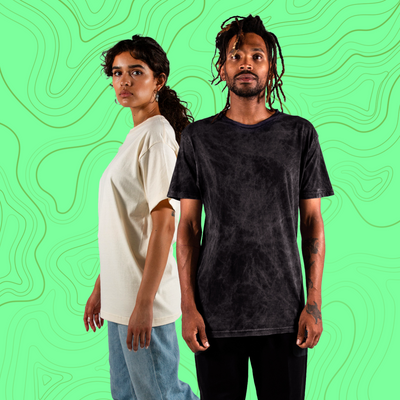Comprehensive Guide to T-Shirt Design and Logo Positioning Strategies
Posted by ARTEMIO NERVEZ JR

Creating the perfect t-shirt design is an art that combines creativity with strategy. Whether you're launching a brand, promoting an event, or simply expressing yourself, where you place your logo and design elements can significantly impact the overall appeal of your shirt. This guide delves into the nuances of t-shirt design and logo positioning, offering insights and strategies to elevate your creations.
Understanding the Canvas

Before diving into design specifics, it's crucial to understand the "canvas" you're working with. A t-shirt offers a unique space for expression, with its front, back, sleeves, and even the neckline serving as potential areas for design. Each area can convey a different message or aesthetic, influencing how viewers perceive the shirt.
Front Placement Strategies
The front of the t-shirt is the most viewed and impactful area for design placement. Here are a few strategies for making the most of this prime real estate:
- Centered Logo: Placing your logo or main design element in the center of the shirt is a classic and safe choice. It draws attention and ensures visibility.
- Upper Left Chest: For a more subtle approach, positioning a small logo on the upper left chest mimics the traditional pocket placement and is ideal for brand recognition without overwhelming the shirt's design.
- Asymmetrical Design: An asymmetrical placement can add intrigue and uniqueness to your design, making it stand out.
Back Placement Ideas

The back of the t-shirt offers a large canvas for creativity, especially useful for additional information or secondary designs:
- Upper Back: The area just below the neckline is perfect for secondary logos, taglines, or website URLs. It's easily visible when the front is covered, such as with open jackets.
- Full Back: Utilize the full-back for large, detailed designs or messages. This space allows for creativity and can complement a simpler front design.
Sleeve Design Considerations
Sleeves are often underutilized but can enhance a t-shirt's design significantly:
- Logo on Sleeves: Adding a small logo or symbol on one or both sleeves can create a more refined, branded look.
- Text Wraps: Sleeve space is perfect for wrapping text, such as slogans or important dates, around the arm for an engaging effect.
Special Placement Ideas
For those looking to break the mold, consider these unique placement ideas:
- Hem Tags: A small logo or design on the shirt's hem can add a surprising and professional touch.
- Inside the Collar: Printing on the inside of the collar offers a hidden message that can be a fun secret for the wearer or used for brand storytelling.
Design and Logo Placement Tips

- Balance is Key: Ensure your design is balanced and doesn't overly clutter one part of the shirt. Balance creates a visually appealing and comfortable wear.
- Consider the Material: Different fabrics may affect how a design looks once printed. Always consider the shirt's material in your design process.
- Audience and Purpose: Always keep your target audience and the shirt's purpose in mind. A design for a corporate event will differ vastly from a band merch t-shirt.
Conclusion
T-shirt design and logo placement require thoughtful consideration to maximize impact and ensure your message or brand is communicated effectively. By experimenting with different strategies and keeping your audience in mind, you can create shirts that stand out and speak volumes. Remember, the best designs often come from breaking the rules, so don't be afraid to explore and innovate beyond traditional placements.
At VS Tees, crafting t-shirt designs and determining logo positions demand deliberate planning to enhance visibility and accurately convey your message or brand identity. By exploring various placement strategies and prioritizing your target demographic, you have the opportunity to produce standout shirts that truly resonate. Keep in mind, that the most memorable designs often emerge from challenging conventional norms, so embrace creativity and venture beyond standard positioning to achieve exceptional results.





